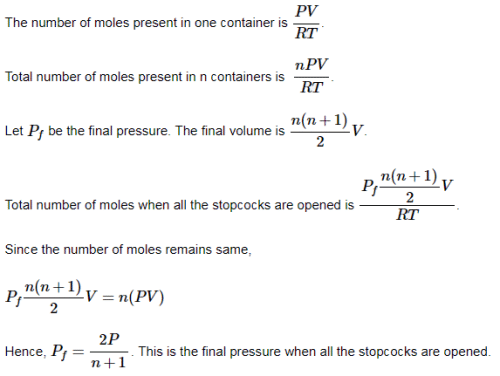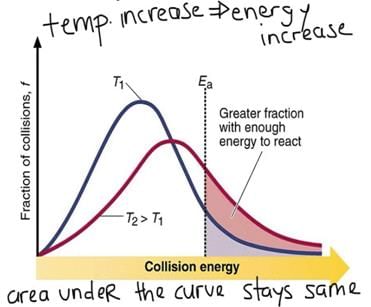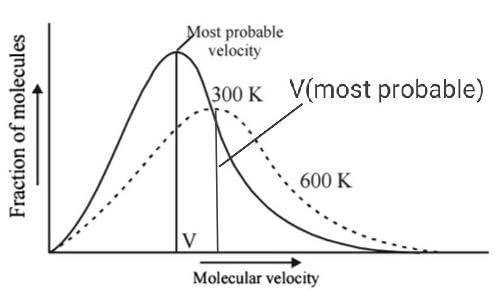Test: States of Matter (Old NCERT) - JEE MCQ
30 Questions MCQ Test Chemistry for JEE Main & Advanced - Test: States of Matter (Old NCERT)
If density of vapours of a substance of molar mass 18 gm / mole at 1 atm pressure and 500 K is 0.36 kg m-3 , then value of Z for the vapours is : (Take R = 0.082 L atm mole K-1)
Equal amount (mass) of methane and ethane have their total translational kinetic energy in the ratio 3: 1 then their temperatures are in the ratio.
For a certain gas which deviates a little from ideal behaviour, the values of density, p were measured at different values of pressure, P. The plot of Pip on the Y-axis versus P on the X-axis was nonlinear and had an intercept on the Y-axis, which was equal
Where M = molar mass.
A sample of water gas has a composition by volume of 50% H2, 45% CO and 5% CO2. Calculate the volume in litre at S.T.P. of water gas which on treatment with excess of stream will produce 5 litre H2. The equation for the reaction is : CO + H2O → CO2 + H2
Flask A of volume 10 liter containing 20 gram of H2 and flask B of volume 10 litre containing 88 gram CO2 are connected by a connector having negligible volume. When valve of the connector is opened what is the composition of H2 gas in flask B after openening the valve.
Consider the reaction, 2X(g) + 3Y(g) → Z(g)
Where gases X and Y are insoluble and inert to water and Z form a basic solution. In an experiment 3 mole each of X and Y are allowed to react in 15 lit flask at 500 K. When the reaction is complete, 5L of water is added to the flask and temperature is reduced to 300 K. The pressure in the flask is (neglect aqueous tension)
Change from liquid in to gaseous state is known as
There are n containers having volumes V, 2V, ……, nV. A fixed mass of a gas is filled in all containers connected with stopcock. All containers are at the same temperature if pressure of first container is P then final pressure when all stopcocks are opened is:
SO2 and CH4 are introduced in a vessel in the molar ratio 1 : 2. The ratio of molecules of two gases present in the container when their rate becomes equal is
A mixture of two gases A and B in the mole ratio 2 : 3 is kept in a 2 litre vessel. A second 3 litre vessel has the same two gases in the mole ratio 3 : 5. Both gas mixtures have the same temperature and same total pressure. They are allowed to intermix the final temperature and total pressure are the same as the initial values, the final volume being 5 litres. Given that the molar masses are MB and MB, what is the mean molar mass of the final mixture?
A 2 m long tube closed at one end is lowered vertically into' water until the closed end is flush with the water surface. See figure below. Calculate the water level height in the tube. (Barometric pressure -1 atm =10 m of hydrostatic water head, Temperature = 25°C, Density of, water = 1.00 g/ml. Neglect water vapour pressure).
At a certain temperature for which RT = 25 lit. atm. mot -1 , the density of a gas, in gm lit-1, is d = 2.00 P + 0.020 P2, where P is the pressure in atmosphere. The molecular weight of the gas in gm mot -1 is
A mixture of carbon monoxide and carbon dioxide is found to have a density of 1.7 g/lit at S.T.P. The mole fraction of carbon monoxide is
If equal weights of oxygen and nitrogen are placed in separate containers of equal volume at the same temperature, which one of the following statements is true?
(mol wt: N2 = 28, O2 = 32)
The molecular radius for a certain gas = 1.25 A. What is a reasonable estimate of the magnitude of the van der Wails constant, b, for the gas?
Given the value of their van der Wails' constant 'a' arrange the following gases in the order of their expected liquification pressure at a temperature T. T is below the critical point of all the gases. Gas CH4 Kr N2 Cl2
‘a’ (atmL2. Mol-1) 2.283 2.439 1.408 6.579
The critical volume of a gas is 0.072 lit. mo1-1. The radius of the molecule will be, in cm
The van der Waal's constant 'b' for N2 and H2 has the values 0.039 lit moil-1 and 0.0266 lit mo1-1. The density of solid N2 is 1 g cm-3. Assuming the molecules in the solids to be close packed with the same percentage void, the density of solid H2 would be (in g cm-3)
Which of the following statements is not true?
If the number of molecules of SO2 (molecular weight = 64) effusing through an orifice of unit area of cross-section in unit time at 0°C and 1 atm pressure is n. The number of He molecules (atomic weight = 4) effusing under similar conditions at 273°C and 0.25 atm is
A capillary tube of uniform diameter contains gas samples A and B, separated by a short column of Hg, L mm in length. The ends are sealed. In horizontal position, the confined gases occupy 'a' mm and 'b' mm in length with a common unknown pressure (P). In vertical position, the lengths become respectively a' mm and b' mm. Then P is equal to
Two glass bulb A and B are connected by a very small tube (of negligible volume) having stop cock. Bulb A has a volume of 100 cm3 and contains certain gas while bulb B is empty. On opening the stop cock, the pressure in 'A' fell down by 60%. The volume of bulb B must be
A certain gas effuses out of two different vessels A and B. A has a circular orifice while B has a square orifice of length equal to the radius of the orifice of vessel A. The ratio of rate of diffusion of the gas from vessel A to that from vessel B is
If 1023 gas molecules each having a mass of 1a-25 kg, placed in a 1 L container, moving with rms speed of 105 cm/sec. then the total KE of gasseous molecules and pressure exerted by molecules, respectively are:
Statement-1: The value of vender wail's constant (a) is larger for ammonia than for nitrogen.
Statement-2: Hydrogen bonding is present in ammonia.
Statement-1: At constant temperature of pressure on the gas is doubled, Density is also doubled.
Statement-2: At constant temperature molecular mass of a gas is directly proportional to the density and inversely proportional to the pressure.
Statement-1: At Boyle's temperature a real gas behaves as ideal gas for wide range of temperature and pressure.
Statement-2: At Boyle's temperature vanderwaal constant 'a' and b compensate each other.
Statement-1: The area under the maxwells distribution molecular speed curve remains same irrespective of temperature of gas.
Statement-2: The fraction of molecules with most probable speed increases with increase of temperature
Statement-1: Greater is critical temperature more easily a gas can be liquefied.
Statement-2: Critical temperature depends on the magnitude of intermolecular forces of attraction between the gas.
|
352 videos|596 docs|309 tests
|























